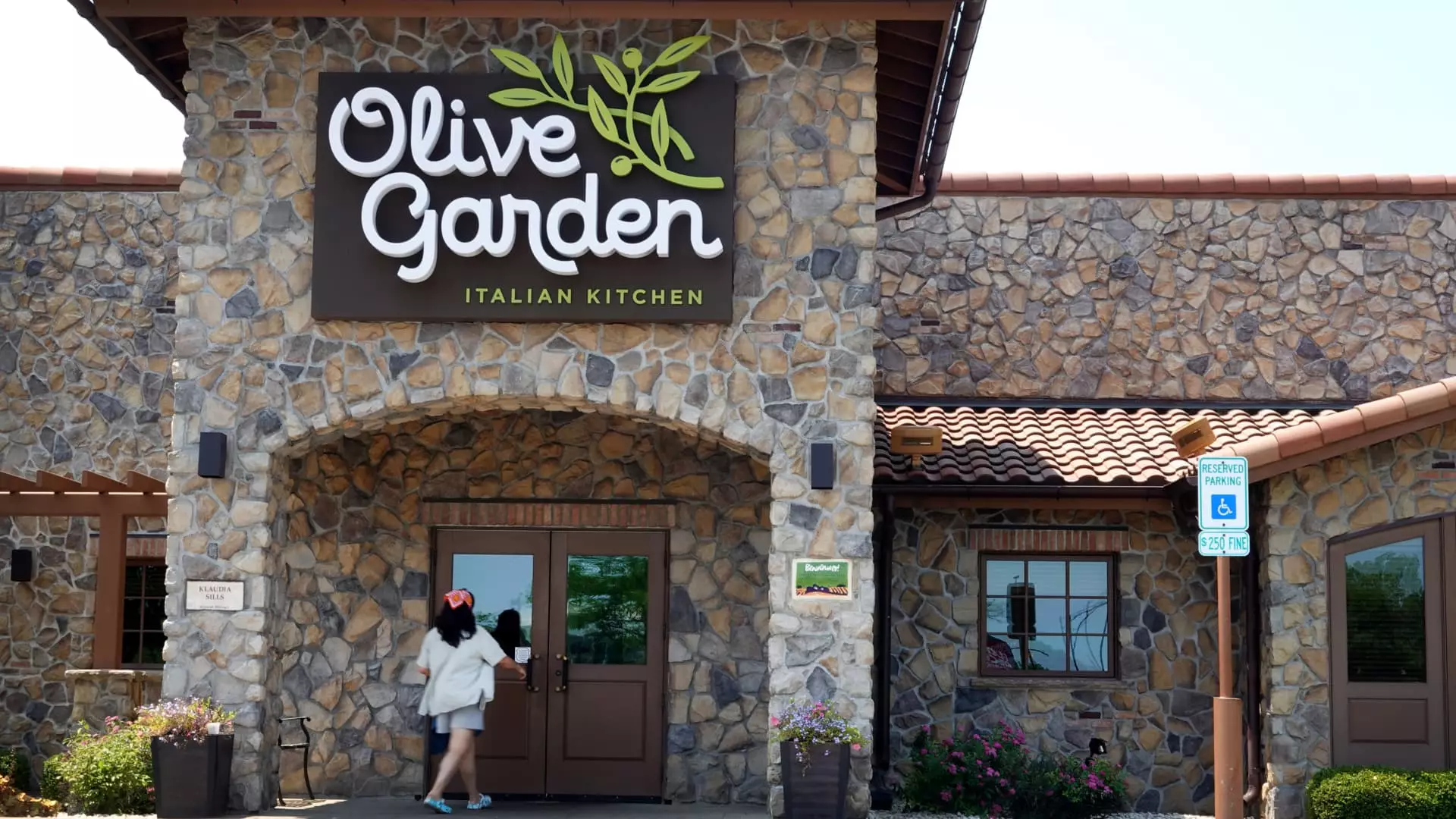In its recent earnings report, Darden Restaurants demonstrated a blend of both positive and challenging indicators, reflecting the complexities of the current dining environment. While the company met analysts’ expectations for earnings and revenue, there were notable variances within individual brands, particularly in the casual and fine-dining segments. The report highlights the multifaceted nature of consumer behavior, and the implications for Darden’s future strategy are profound.
Darden’s quarterly results were indicative of a company navigating through a dynamic market. The reported adjusted earnings per share (EPS) of $2.03 surpassed the expected $2.02. Furthermore, total revenues came in at $2.89 billion, slightly shy of the $2.90 billion anticipated by Wall Street. Despite the marginal revenue miss, the company’s fiscal second-quarter net income rose to $215.1 million, compared to $212.1 million seen in the same period last year, showcasing a resilient bottom line.
Additionally, Darden’s same-store sales rose by 2.4%, significantly above the StreetAccount’s estimate of 1.5%. These figures suggest that, despite economic challenges, customers have been returning to dine out. Darden’s CEO, Rick Cardenas, emphasized the positive trend among middle-income consumers, indicating a potential recovery in customer confidence.
One of the standout performers for Darden was LongHorn Steakhouse, which achieved same-store sales growth of an impressive 7.5%, far exceeding the anticipated 4.1%. This success can be attributed to LongHorn’s strategic focus on delivering quality at competitive prices, effectively attracting a larger customer base.
Conversely, Olive Garden, which is crucial to Darden’s revenue—accounting for over 40% of its total—experienced more modest growth of 2%. Analysts had predicted a slightly lower figure of 1.4%. Notably, Olive Garden reintroduced its popular Never Ending Pasta Bowl promotion, which encouraged diners to enhance their orders by adding proteins, a strategy that yielded positive results. Moreover, the chain is trialing Uber delivery across its locations, potentially positioning itself to adapt to changing consumer preferences for dining experiences.
However, Darden’s fine-dining segment faced headwinds, experiencing a significant drop in same-store sales. The decline of 5.8% was steeper than the 2.8% decrease forecasted. Factors such as rising prices and external impacts from recent hurricanes have contributed to this downturn. The CEO noted that the calendar shift of Thanksgiving also influenced these results, pushing the holiday sales into a different fiscal quarter and causing an disruption in fine-dining revenues.
Despite the challenges, Darden remains focused on growth, having opened 39 new locations, including 103 Chuy’s restaurants following its recent $605 million acquisition of the Tex-Mex chain. Integrating Chuy’s into its operations is a significant move for Darden, as it enhances its footprint in a competitive culinary space.
Darden revised its fiscal 2025 outlook to accommodate the anticipated contributions from Chuy’s, projecting total sales to reach $12.1 billion, an upward adjustment from earlier estimates. This reflects the company’s belief in leveraging acquisitions for long-term growth, although Chuy’s contributions will not be reflected in same-store sales metrics until 2026.
Looking forward, Darden is confronted with the ongoing challenge of adapting to shifting consumer behaviors. While middle-income earners are showing increased engagement with Darden’s offerings, higher-income customers remain cautious, which could complicate the recovery of fine-dining establishments.
The macroeconomic landscape is evolving, and Darden needs to stay attuned to these shifts to maintain its momentum. Strategies must include enhancing customer engagement, perhaps through loyalty programs or promotional offerings, while also prioritizing menu flexibility to cater to diverse customer preferences.
Darden Restaurants’ latest earnings report showcases a mixed performance characterized by growth in certain areas coupled with notable declines in others. As the company looks to the future, it will need to be strategic in its operational adjustments and remain responsive to both opportunities and challenges within a competitive landscape.

